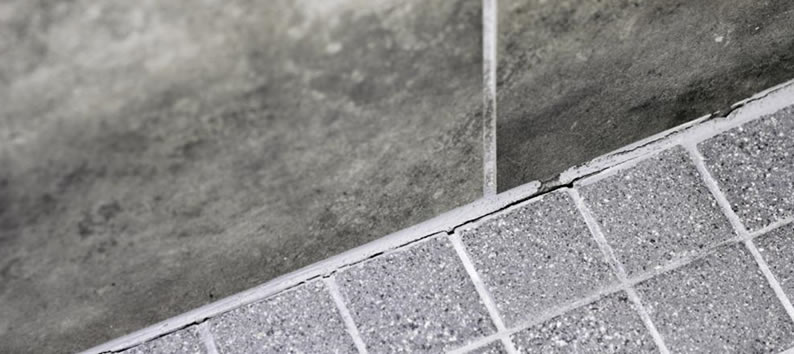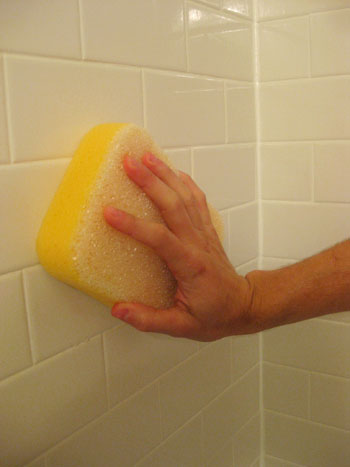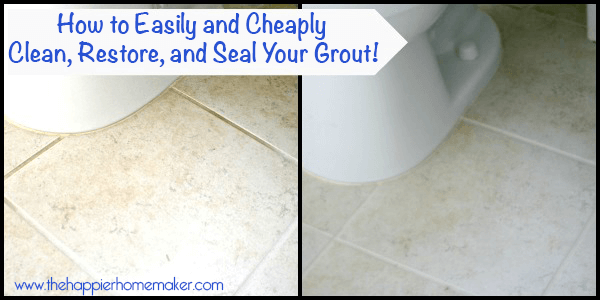Yes, sealing grout in a bathroom after cleaning helps keep it waterproof and prevents staining. Properly sealed grout stays cleaner for longer and is easier to maintain.
Having a clean and well-maintained bathroom is essential for a healthy and hygienic home environment. Grout is prone to mold, mildew, and staining due to constant exposure to moisture and dirt. After cleaning the grout, sealing it provides an extra layer of protection against water damage and discoloration.
This preventive step ensures that your grout remains in good condition, prolonging the life of your bathroom surfaces and enhancing their appearance. By understanding the importance of sealing grout, you can maintain a fresh and clean bathroom for years to come.

Credit: groutmagnificent.com
Importance Of Sealing Grout In The Bathroom
Sealing grout in the bathroom is an essential part of maintaining the integrity and beauty of your tiled surfaces. Whether it’s protecting against water damage or preventing stains and discoloration, sealing the grout plays a crucial role in ensuring the longevity and cleanliness of your bathroom.
Protecting Against Water Damage
Sealing your grout in the bathroom acts as a barrier against water infiltration, thereby preventing moisture from seeping into the porous grout material. This helps to avoid potential water damage to the underlying structure of your bathroom tiles, which can lead to costly repairs and mold growth.
Preventing Stains And Discoloration
Unsealed grout in the bathroom is susceptible to absorbing liquids and dirt, leading to unsightly stains and discoloration. By sealing the grout, you create a protective shield that repels moisture and prevents stains, keeping your bathroom tiles looking fresh and clean for longer periods.
Benefits Of Sealing Grout
Discover the numerous benefits of sealing grout in your bathroom after cleaning. From enhanced durability to easy maintenance, the advantages of proper grout sealing cannot be overstated.
Enhanced Durability
Sealing the grout in your bathroom helps protect it from absorbing moisture, dirt, and other particles that can cause damage over time.
Easy Maintenance
Sealed grout is easier to clean and maintain, saving you time and effort in the long run.
When To Seal Grout In The Bathroom
After Installing New Grout:
Sealing grout protects it from moisture and stains. It is recommended to seal new grout after it has cured for at least 48 hours.
After Deep Cleaning:
After deep cleaning, grout is left vulnerable. Sealing it maintains its cleanliness and prevents future damage.

Credit: www.bobvila.com
Steps To Seal Grout In The Bathroom
Sealing grout in the bathroom is a crucial step in maintaining the cleanliness and longevity of your tiled surfaces. With the high levels of moisture and potential exposure to soaps, shampoos, and other products, sealing grout helps to prevent staining and mold growth. Below are the essential steps for properly sealing the grout in your bathroom, ensuring a durable and beautiful finish.
Preparing The Grout
Before starting the sealing process, it’s important to ensure that the grout is clean and free of any debris or residue. Here are the steps to prepare the grout:
- Clean the grout lines thoroughly using a suitable grout cleaner.
- Rinse the grout with clean water and allow it to dry completely.
- Inspect the grout lines for any signs of damage and repair as needed.
Applying The Sealer
Once the grout is properly prepared, it’s time to apply the sealer. Follow these steps for applying the sealer:
- Choose a high-quality grout sealer suitable for your specific type of grout and follow the manufacturer’s instructions.
- Apply the sealer using a small brush or applicator, ensuring even coverage on the grout lines.
- Allow the sealer to penetrate the grout for the recommended amount of time before wiping off any excess sealer with a clean, dry cloth.
- Give the sealer adequate time to cure as per the product instructions before exposing the grout to moisture.
Choosing The Right Grout Sealer
After cleaning your bathroom grout, it’s important to choose the right sealer to protect it from moisture and stains. Properly sealed grout helps maintain its appearance and durability. Consider a high-quality grout sealer for long-lasting protection and easy maintenance.
Types Of Grout Sealers
When it comes to choosing the right grout sealer for your bathroom, there are a few options you can consider. Here are the most common types:
- Penetrating sealer: This type of grout sealer is absorbed into the grout, creating a protective barrier that prevents moisture and stains from penetrating the surface. It is suitable for both porous and non-porous grout.
- Membrane sealer: This sealer forms a thin film or layer on top of the grout, acting as a barrier against water and stains. It is commonly used for non-porous grout surfaces and provides a glossy finish.
- Epoxy sealer: Epoxy sealers are known for their durability and resistance to chemicals, making them ideal for high-traffic areas like bathrooms. They come in two parts – the epoxy resin and hardener – which need to be mixed before application.
Now that you know the different types of grout sealers, let’s move on to the considerations for selecting the right one.
Considerations For Selection
Choosing the right grout sealer for your bathroom requires considering a few important factors. These include:
- Type of grout: Determine whether your grout is porous or non-porous. This will help you choose a sealer that will effectively protect your grout.
- Application method: Consider the ease of application and the tools required. Some sealers can be sprayed on, while others need to be brushed or rolled onto the grout.
- Level of protection: Assess the level of protection you need for your bathroom grout. If you have high humidity or heavy foot traffic, you may want to opt for a more durable and long-lasting sealer.
- Appearance: Think about the desired finish for your grout. Some sealers leave a natural look, while others provide a glossy or matte finish.
By considering these factors, you can choose a grout sealer that best suits your bathroom’s needs and ensures long-lasting protection.

Credit: www.younghouselove.com
Common Mistakes To Avoid When Sealing Grout
Properly sealing grout in your bathroom is crucial after cleaning to prevent mold and stains from forming. Avoid common mistakes like using the wrong sealant or not applying it evenly to ensure long-lasting protection for your grout surfaces.
Common Mistakes to Avoid When Sealing GroutNot Cleaning The Grout Properly
One of the most common mistakes homeowners make when sealing grout is not cleaning it properly beforehand. Cleaning the grout is an essential step before applying any sealer, as it helps remove dirt, grime, and any residue that may be present on the surface. Failure to clean the grout adequately can prevent the sealer from adhering properly and may result in an uneven or ineffective seal.
Tip: Before applying the sealer, thoroughly clean the grout using a mild detergent and warm water. Use a scrub brush or a toothbrush to gently scrub the grout lines and remove any stubborn stains. Rinse the grout with clean water and allow it to dry completely before moving on to the sealing process.
Overapplying Or Underapplying The Sealer
Another common mistake when sealing grout is overapplying or underapplying the sealer. Both scenarios can have negative consequences for the effectiveness and durability of the seal. Overapplying the sealer can lead to a thick, uneven coat that may not dry properly and can leave a visible residue on the tile surfaces. On the other hand, underapplying the sealer may result in an incomplete seal, leaving the grout vulnerable to stains, moisture, and damage.
Tip: When applying the sealer, follow the manufacturer’s instructions carefully to achieve the optimal amount of coverage. Use a small brush or foam applicator to apply the sealer evenly to the grout lines. Allow the sealer to penetrate the grout for the recommended time, then wipe off any excess with a clean cloth. It is crucial to achieve a thin, even coat for a successful seal.
Frequently Asked Questions For Do You Have To Seal Grout In Bathroom After Cleaning
Should I Seal Grout In My Bathroom After Cleaning?
It is highly recommended to seal the grout in your bathroom after cleaning. Sealing helps prevent staining and moisture damage.
How Often Should I Seal The Grout In My Bathroom?
The frequency of sealing depends on various factors like foot traffic and the type of grout used. Generally, it is advised to reseal every 1-3 years to maintain the protection.
What Are The Benefits Of Sealing Grout In The Bathroom?
Sealing grout provides a protective barrier against water, stains, and mold growth, prolonging the life of your grout and making it easier to clean.
Can I Skip Sealing The Grout In My Bathroom?
While it is not mandatory, skipping grout sealing leaves it vulnerable to stains, water damage, and mold growth, reducing its lifespan and making cleaning more difficult.
Conclusion
After cleaning your bathroom grout, sealing it is essential for long-term protection. Properly sealed grout prevents water and dirt from penetrating, ensuring a pristine and durable surface. With the right sealant, you can maintain the beauty of your bathroom while preventing mold and mildew growth.
Make sealing a part of your regular grout maintenance routine.

